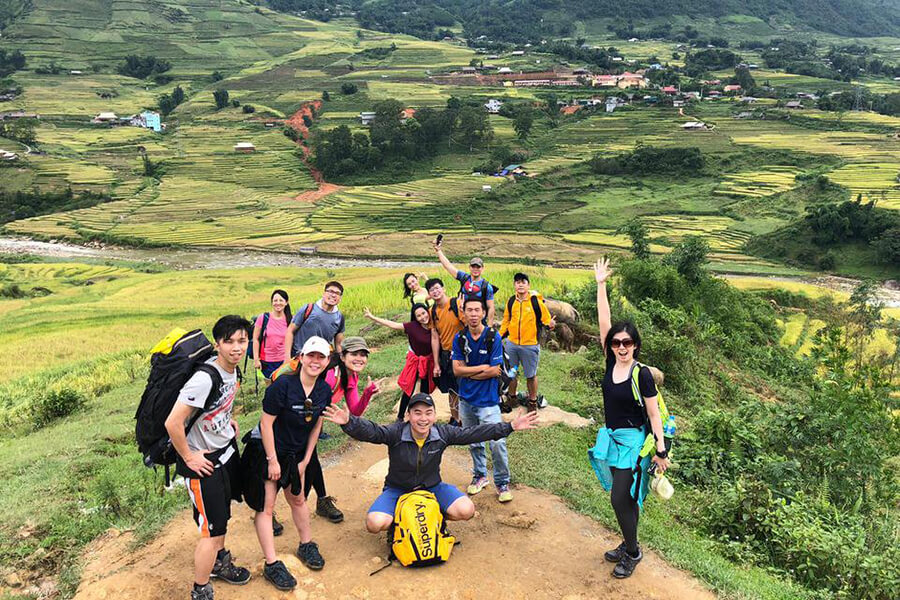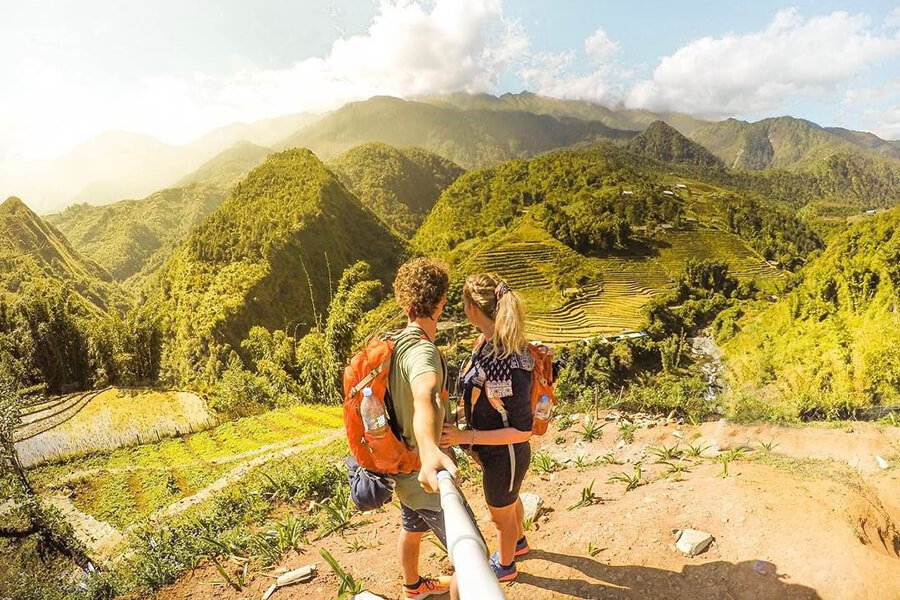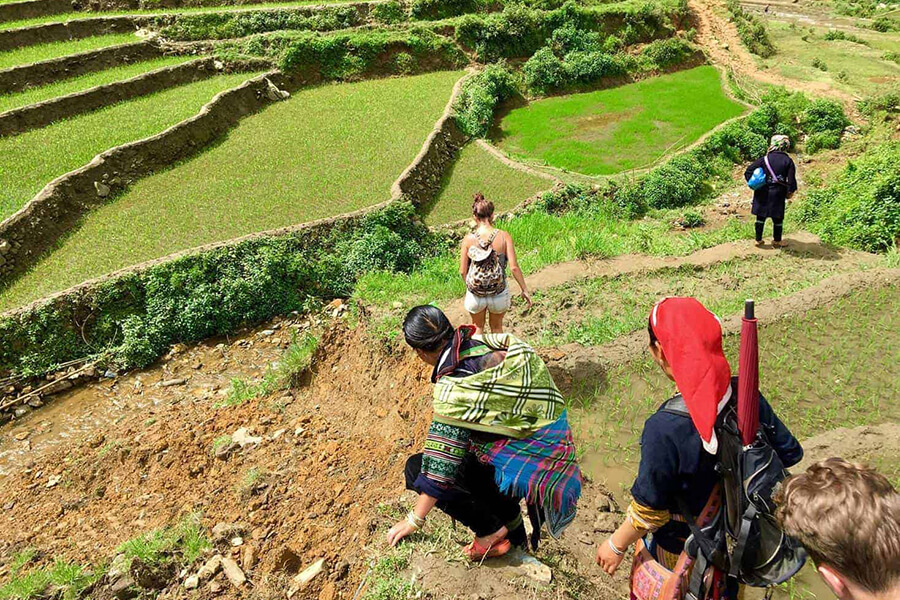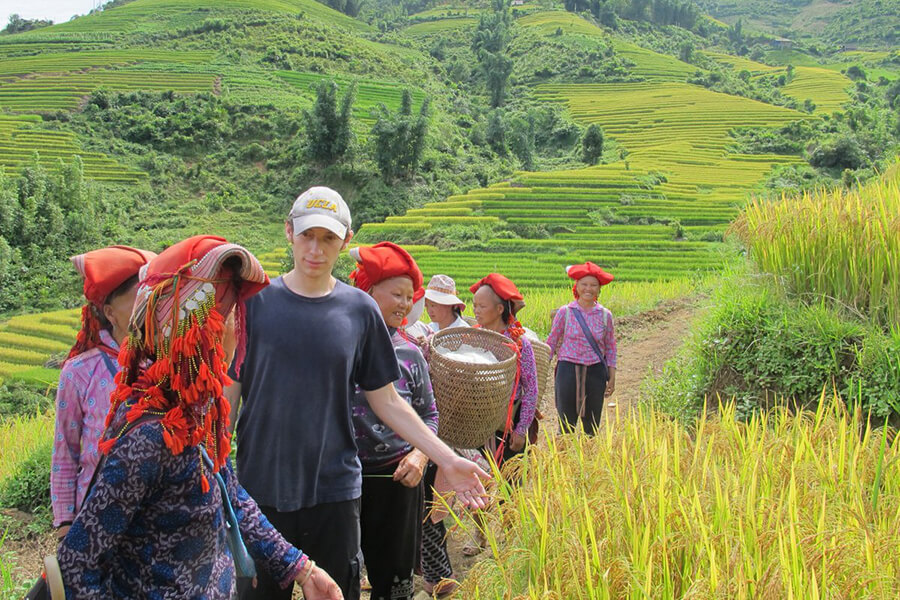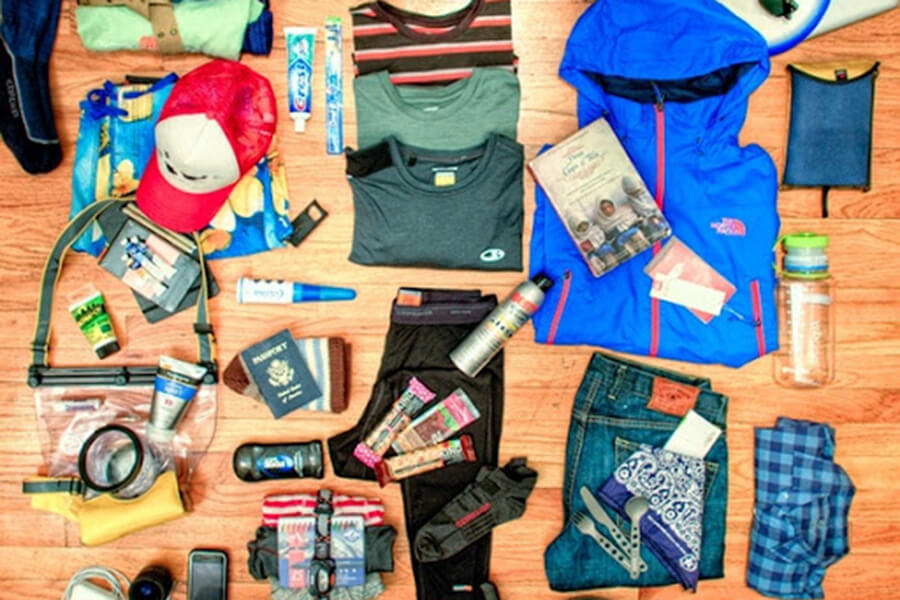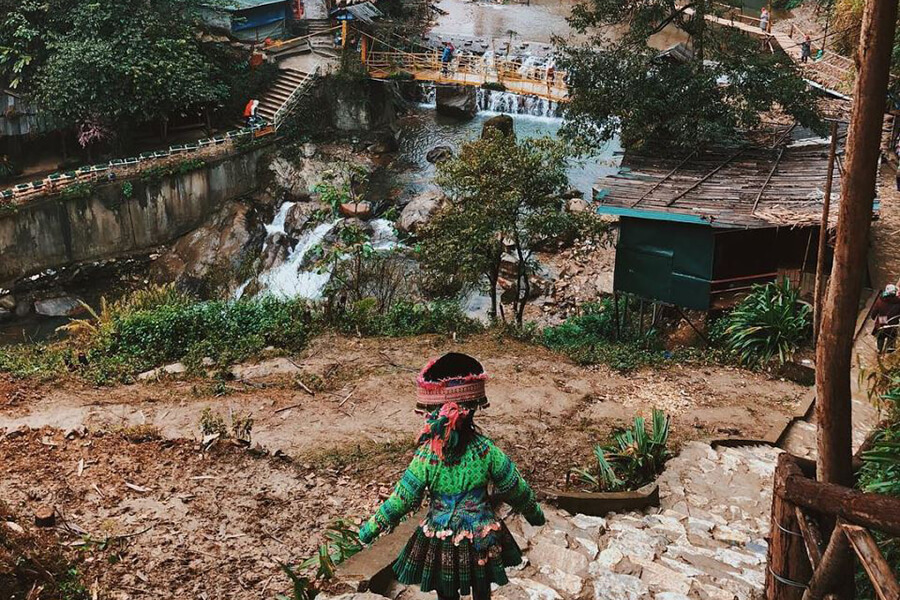No products in the cart.
HANOI SAPA TOURS
Sapa Trekking: Amazing Route Worth Exploring in Sapa Day trips
After every trip, there should be experiences to be summarized, just like the experience of Trekking and visiting the Sapa villages. This will be useful information for everyone to refer to in order to start a complete and safe journey. Any questions and tips for Trekking and visiting Sapa villages will be summarized by hanoi tour in this article for your reference before embarking!
Sapa Trekking Experience
Brief Introduction to Sapa Trekking
First of all, you can understand that Trekking is a form of long-distance walking in the great outdoors, which is inherently adventurous. Therefore, you should equip yourself with knowledge.
As you may know, Sapa is famous for its beautiful, majestic scenery, and it boasts many challenging routes suitable for the Trekking adventures of young travelers. During your Trekking trip in Sapa, you will walk on paths amidst lush rice fields and valleys.
On different routes, you will have the opportunity to interact with various ethnic minority communities, where you can discover unique and distinct cultural aspects or witness images of diligent water buffaloes working in the vast rice fields. These will undoubtedly be ideal check-in spots during your journey.
Ideal Times for Sapa Trekking
Choosing the right time for your trip will make your journey more complete and perfect. Sapa is a mountainous region with a temperate climate, characterized by a humid subtropical climate.
During the summer, the air in Sapa is usually cool and less sunny. In winter, the weather becomes bitterly cold, with some days seeing snowfall covering everything. Hanoilocaltour suggests specific times for you to consider for your upcoming journey:
The best time to experience Trekking in Sapa is from September to November. During this time, the Sapa rice fields are golden and ripe, making it an excellent time to capture the beauty of the landscape and, of course, it’s less rainy and the weather is pleasantly cool.
If your trip takes place between January and March, you have the opportunity to admire various blooming flowers in the cold weather, and many local festivals are celebrated during this period.
You should avoid the summer months (from May to August) as Sapa frequently experiences heavy rainfall, making the trails slippery and challenging for Trekking.
Challenges to Consider During Sapa Trekking
The paths for Trekking may involve rugged and uneven terrain, especially on steep mountain sections. Therefore, you need to be physically fit and have good endurance. Under normal conditions, you may spend about 5 to 6 hours covering a distance of 12 to 15 kilometers. When hiking in the mountains, it will not be as straightforward.
During heavy rain, the paths become slippery, and you will experience fatigue and anxiety during the journey, making it physically demanding. Therefore, good health is essential to overcome these challenges.
Sapa Trekking: Tips to Keep in Mind
It’s advisable to hire a local guide when Trekking, as they have a deep understanding of the terrain and Trekking experience. They will accompany you throughout the journey with clear and persuasive advice. Typically, your guide can also serve as a porter to help carry your belongings.
If you prefer to hike alone, you should thoroughly research the routes you plan to take in advance. It’s best to choose nearby villages as rest stops, where you can ask locals for route information. You can also hire a local porter to show you the way and help with carrying your gear.
The cost of hiring a porter ranges from 600,000 VND per person (as of 2023). Be sure to contact them before your trip to ensure they have everything ready.
Here are some phone numbers of reputable porters in Sapa that you can consider:
– A Phú – Phone number: 039.956.2014
– Lồ A Phổng – Phone number: 0835.274.649
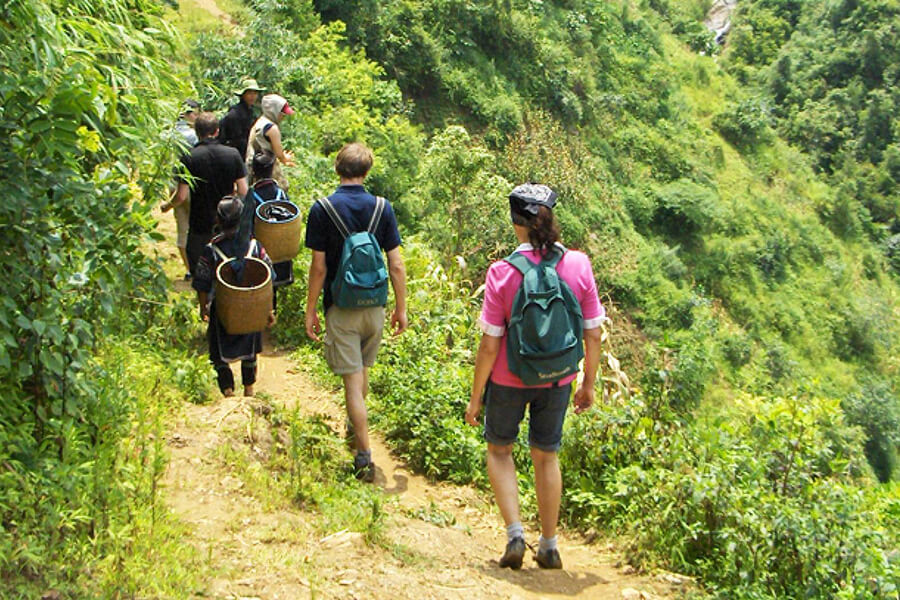 One important note is that local residents often approach Trekking tourists to sell their products, which can be bothersome. However, you should politely decline their offers. In particular, you should avoid discussing personal matters with your guide, as they may come from a village and have close relationships with each other.
One important note is that local residents often approach Trekking tourists to sell their products, which can be bothersome. However, you should politely decline their offers. In particular, you should avoid discussing personal matters with your guide, as they may come from a village and have close relationships with each other.
Essential Items to Bring in Sapa Trekking
A trip like this will require essential items to support you throughout your journey. Some of the necessary items to bring include hiking boots and a trekking pole, clothing, personal items, food, medical supplies, and necessary technology gadgets.
Exploring Sapa Villages in Sapa Trekking
A trip to explore Sapa villages can be done through Trekking, and there are several villages you can visit, such as Tả Phìn, Cát Cát, Lao Chải – Tả Van. Here are some tips you should keep in mind to have a respectful experience with the local people:
– When entering a local’s house, never sit in the middle or the center of the house. Always follow the host’s instructions to avoid causing discomfort to them.
– Avoid wearing excessively short dresses and refrain from speaking loudly. When encountering children, do not touch their heads or kiss them, as this can make the children scared and susceptible to illness.
– If you see a bunch of green leaves hanging high on a prominent pole at the entrance of the village, it’s a sign of a local ceremony or a protective ritual. In such cases, you should not enter.
– In clean and sacred areas, refrain from resting and eating as it may be a communal worship space, a place with spiritual significance. Also, avoid whistling, as locals consider it a call for bad spirits.
There are some hosts who are very hospitable and may offer you food or drinks. If you do not wish to consume them, decline politely to avoid misunderstanding. In your communication with the Hmong people, avoid pointing with your index finger while speaking, as it is considered disrespectful.
These are the experiences and tips for independent trips to Sapa, specifically for Trekking and visiting Sapa villages, provided by Hanoilocaltour. You can refer to these and prepare your essentials before setting off on your journey.

